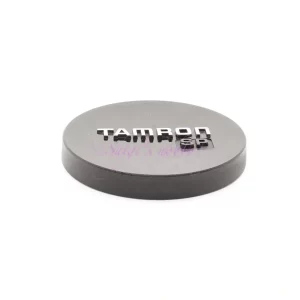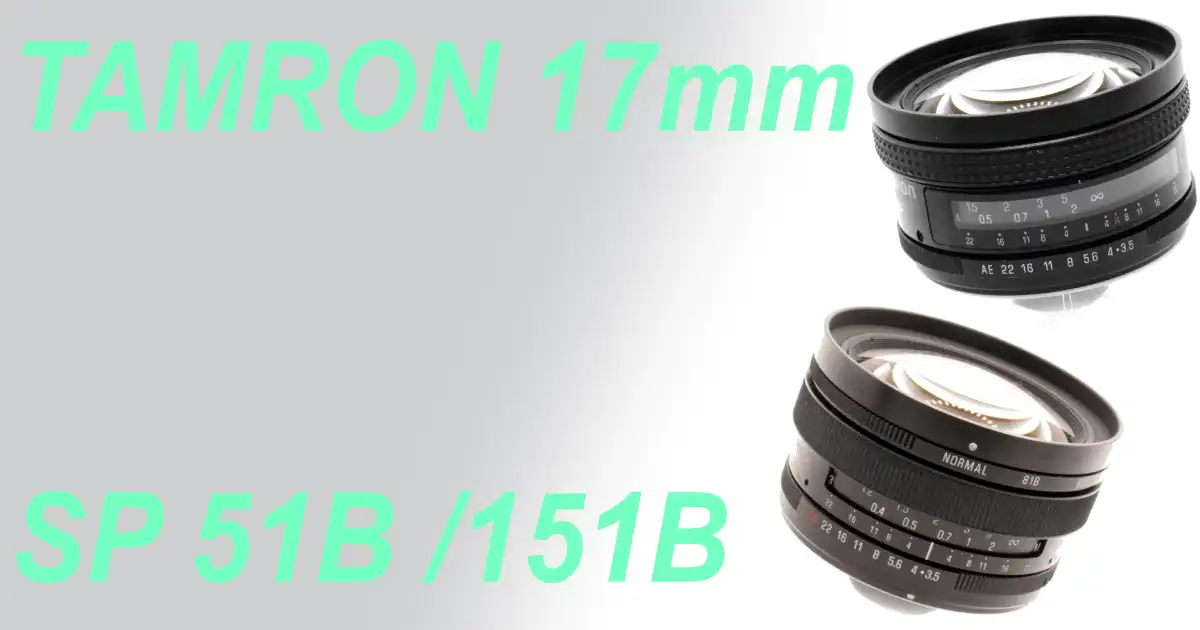Last updated on 2025-10-28
A review and sample photos of the Tamron SP 17mm (51B/151B) used with various digital cameras.
- Please see the disclaimer regarding advertising here.
- Italicized links in the text are advertisement links that take you to other sites.
Table of contents

Gallery
The following cameras and lenses were used to take the example photos.
- SONY α900 +Tamron SP 17mm F3.5(151B)
- FUJIFILM S3Pro +Tamron SP 17mm F3.5(151B)
- HASSELBLAD X2D-100C +Tamron SP 17mm F3.5(51B)
- PENTAX K20D +Tamron SP 17mm F3.5(51B)
Review
1.Overview
The Tamron SP 17mm F3.5 (51B / 151B) is a manual-focus wide-angle lens.
This 17mm lens comes in two model numbers: the 51B, released in 1979, and the 151B, released in 1989, making it a fairly veteran 17mm ultra-wide-angle lens.
The 51B model has a vertically knurled focus ring with an exposed distance marker, and, like Leica R-mount wide-angle lenses, is equipped with four rotating color filters.
The 151B model is the successor to the 51B, with the distance marker covered by a plastic cover and the color filters removed.
The lens mount uses the Adaptall 2 standard, making it compatible with a wide range of SLR cameras, including the Nikon Ai-S (Nikon F), Canon EF (EOS), Minolta α, Yashica Contax, Praktica M42, and Leica R.
The hood fits onto the camera barrel and tightens with a screw on the side; the 51B comes with a rubber 20FH, while the 151B comes with a metal 86FH. The lens filter diameter is 82mm, and filters screw into the front of the hood, so filters cannot be attached without the hood.
When buying this lens second-hand, it often does not come with a hood, and buying the hood separately later can be quite expensive. In addition to the hood, there is also a dedicated front cap, which protects the lens as filters cannot be attached without the hood. This is more likely to be included with used cameras.

2.Usability
The The Tamron SP 17mm F3.5 (51B / 151B) is an ultra-wide-angle lens compatible with 35mm film. When used with a SIGMA SD14 (with a small sensor), the sensor conversion factor is 1.7x, equivalent to 29mm. When used with a PENTAX K20D, Sony α700, or Fujifilm FinePix S3Pro, the sensor conversion factor is 1.5x, equivalent to 26mm. When used with an APS-C sensor camera, it feels like a wide-angle lens for 35mm film.
Because this is an older lens, image distortion can be noticeable at the edges of 35mm film at wide apertures. This can be improved to some extent by narrowing the aperture.
With cameras with APS-C sensors, the edges are cut off, allowing you to use only the best central image.
To expose the lens to fresh air, I attached a Leica R mount to a Hasselblad X2D via a NOVOFLEX X-R mount adapter to test whether it could handle the 100-megapixel resolution. When attached to the Hasselblad X2D, infinity was slightly over-inflated, with the infinity position positioned somewhere between infinity and 2m on the distance scale.
The results showed that the center of the captured image had acceptable resolution, but the image circle was insufficient for the 44 x 33mm center size, and a 33 x 33mm square crop seemed to be the limit of its use. When cropped at 3:2 in the 35mm Leica format, considering only vignetting, 9922 x 6614 pixels are usable, covering about 37mm horizontally, making 35mm film format no problem.
With a short focal length of 17mm, the lens can sometimes make it difficult to find the focus peak in the viewfinder of an SLR, but using the magnification function on the X2D’s EVF made it very easy to confirm the focus position, and I was truly grateful for advances in technology.
The focus ring rotation feel is based on the lenses I own, but the 51B is smooth, while the 151B feels a bit rough, as if the grease has worn off.
Tamron’s manual focus lenses do not deteriorate much if stored and used properly, and even 40-year-old lenses are still perfectly usable.
The 51B is not a lens that often appears on the used market, so I found one used in 2015 and bought it. I have been using the 151B for about five years now. The 51B’s built-in color filters are a mechanism from the film era, and with digital cameras, color can be adjusted in post-processing, so it’s not a particularly necessary feature. I don’t use ultra-wide-angle lenses very often, so this lens, which can be used with a variety of mounts, was very useful.
3.Summary
In conclusion, to sum up the The Tamron SP 17mm F3.5 (51B / 151B) , although it is an older ultra-wide-angle lens, it is a more than practical lens for use with a 20-megapixel camera.
If you don’t use ultra-wide-angle lenses that often, the benefits of using Tamron’s Adaptall 2 mount system are significant.
Specifications, considerations, etc.
The 17mm focal length for 35mm film has been included in the zoom lens category since the 2010s, and in 2003 Sigma released the SIGMA 12-24mm F4.5-5.6 EX DG, a zoom lens that included 17mm.
Furthermore, 14mm focal lengths are now common for ultra-wide-angle prime lenses, making 17mm an outdated focal length. A newer 17mm lens is the autofocus AT-X Pro 17mm F3.5, sold by lens manufacturer TOKINA for Canon EF and Nikon F mounts, and it’s also relatively common used.
As a prime lens that fills the gap between 20mm and 14mm focal lengths, I recommend giving it a try if you have the opportunity.
| Lens name | 51B | 151B |
| Local length(mm) | 17 | 17 |
| Max aperture | 3.5 | 3.5 |
| Min aperture | 22 | 22 |
| Leaf blade | 5 | 5 |
| Lens Construction | 12elements in 10group | 12elements in 10group |
| Min distance(m) | 0.25 | 0.25 |
| Lens length(mm) | 41.7 | 41.7 |
| Lens Max diameter(mm) | 70 | 71 |
| Filter Size(mm) | 82 | 82 |
| Weight(g) | 347 | 325 |
| Release date | 1979-1984 | 1989-2000 |
Reference links
Afiliate Link

Amazon Prime Sale
Update history
- 2025.9.4
- 2024.9.9
- 2024.03.29:modified article
- 2023.06.05:firest post


Be First to Comment